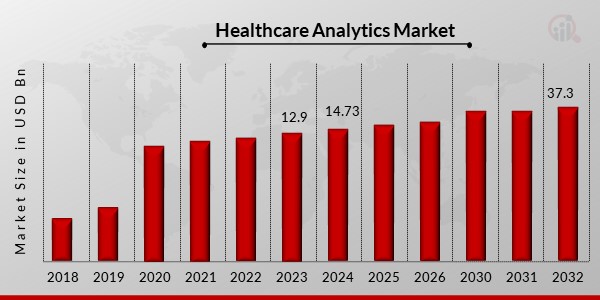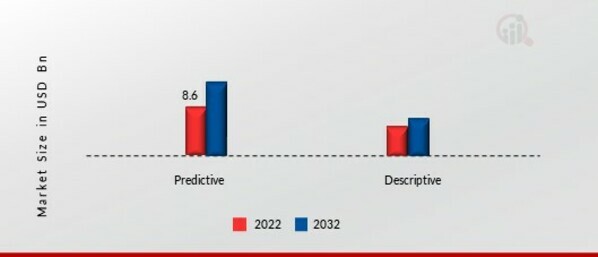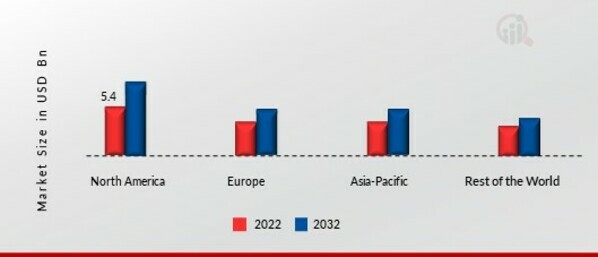Certified Global Research Member


Key Questions Answered
- Global Market Outlook
- In-depth analysis of global and regional trends
- Analyze and identify the major players in the market, their market share, key developments, etc.
- To understand the capability of the major players based on products offered, financials, and strategies.
- Identify disrupting products, companies, and trends.
- To identify opportunities in the market.
- Analyze the key challenges in the market.
- Analyze the regional penetration of players, products, and services in the market.
- Comparison of major players’ financial performance.
- Evaluate strategies adopted by major players.
- Recommendations
Why Choose Market Research Future?
- Vigorous research methodologies for specific market.
- Knowledge partners across the globe
- Large network of partner consultants.
- Ever-increasing/ Escalating data base with quarterly monitoring of various markets
- Trusted by fortune 500 companies/startups/ universities/organizations
- Large database of 5000+ markets reports.
- Effective and prompt pre- and post-sales support.
The Healthcare Analytics Market is experiencing significant growth due to the increasing demand for data-driven decision-making in the healthcare sector. Healthcare providers are leveraging analytics to extract meaningful insights from vast amounts of data, aiding in informed decision-making for patient care, resource allocation, and operational efficiency.
With a shift towards population health management, healthcare analytics plays a pivotal role in understanding and managing the health of entire populations. Analyzing patient data helps identify trends, predict disease outbreaks, and implement preventive measures, contributing to improved public health outcomes.
The move from payment based on services to value-based care is a big factor for the Healthcare Analytics Market. Tools that help with numbers can guide health facilities to improve the quality of care, better patient results and save money. It also matches what value-based care wants doing."
Improvements in analytics tools like artificial intelligence and machine learning make healthcare solutions better. Predictive analytics, natural language processing and data visualization help medical workers to use important information from big sets of data.
The big increase in health care data, like electronic health records (EHRs), images and wearable device information needs better ways to do advanced analytics. Healthcare data-solving tools help manage and study lots of different sources. They give a full picture of patient health, including results from treatments.
Strict rules set by government organizations and health care standards push the use of healthcare analytics tools. These tools help doctors follow guidelines and rules for reporting, while making sure data is correct.
The rising costs of health care services have made healthcare groups look for ways to control their spending. Healthcare analysis helps in saving money when making choices by finding ways to make things work better, using resources wisely and avoiding waste.
The worldwide sickness has shown how important data analysis is in healthcare. Tools that help with math have been very important for looking at and controlling how the virus spreads. They also try to guess what healthcare things are needed, study how Covid-19 affects health results and ways of treating people better.
The Market for Healthcare Analytics is affected by problems with connecting and sharing data. Making sure data moves smoothly between different systems is very important for getting big picture wisdom. Tools that can handle these problems are in great need right now.
The increasing danger of cyber attacks in the health care area shows that we need strong safety steps for data solutions like analytics. Keeping patient information safe from people who shouldn't see it and making sure data is correct are important things to think about when using secure health care analytics systems.
Collaboration and partnerships among healthcare organizations, technology vendors, and analytics providers contribute to market growth. These alliances foster the development of integrated solutions that address the evolving needs of the healthcare analytics landscape.
Covered Aspects:
| Report Attribute/Metric | Details |
|---|---|
| Market Size Value In 2022 | USD 11.3 Billion |
| Market Size Value In 2023 | USD 12.9 Billion |
| Growth Rate | 14.20% (2023-2032) |
Healthcare Analytics Market Highlights:
Global Healthcare Analytics Market Overview
Healthcare Analytics Market Size was valued at USD 12.9 Billion in 2023. The Healthcare Analytics Market industry is projected to grow from USD 14.73 Billion in 2024 to USD 37.3 Billion by 2032, exhibiting a compound annual growth rate (CAGR) of 12.31% during the forecast period (2024 - 2032). Increasing demand for data-driven decision-making, growing pressure to reduce healthcare costs, emphasis on population health management, advancements in big data and cloud technologies, regulatory requirements and quality reporting, technological advancements in artificial intelligence (AI) and machine learning (ML), increasing adoption of electronic health records (EHRs), are the key market drivers enhancing the market growth.

Source Secondary Research, Primary Research, MRFR Database and Analyst Review
Healthcare Analytics Market Trends
- Growing pressure to reduce healthcare costs is driving the market growth
The market for healthcare analytics is primarily driven by the rising push to lower healthcare expenses. Healthcare providers, payers, and governments around the world are facing serious issues as a result of rising healthcare expenses. In order to find potential for cost savings, optimize resource allocation, and boost operational effectiveness, healthcare analytics offers a solution.
Organizations can locate waste and inefficiencies in healthcare systems by using healthcare analytics. Healthcare firms can identify procedures that are increasing costs without providing equivalent value by evaluating vast amounts of data, including claims data, operational data, and supply chain data. This results in significant cost savings by streamlining operations, minimizing pointless tests and procedures, and removing redundancies. Additionally, healthcare analytics enables firms to examine patient information, clinical results, and treatment trends to pinpoint the most economical care pathways. Healthcare professionals can choose treatments, drugs, and interventions that maximize outcomes while lowering costs by utilizing data-driven insights. By eliminating unneeded hospital stays, shortening stay times, and enhancing care coordination, costs can be kept under control. In addition, the increased expenses of the healthcare system are a result of healthcare fraud, waste, and abuse. Healthcare analytics solutions use cutting-edge algorithms and predictive modeling to identify trends suggestive of fraud, including erroneous coding, needless services, and atypical billing. Healthcare companies and payers can considerably decrease financial losses and control healthcare costs by proactively recognizing and avoiding fraudulent behaviors.
Hence, the adoption of healthcare analytics solutions is mostly driven by the mounting push to cut healthcare expenditures. Healthcare businesses may discover inefficiencies, optimize care delivery, detect fraud, allocate resources strategically, support value-based care initiatives, and improve revenue cycle management by utilizing data analytics and predictive modeling. These skills give organizations the ability to reduce costs, boost financial performance, and provide high-quality care in an economical way. Thus, driving the Healthcare Analytics Market revenue.
Healthcare Analytics Market Segment Insights
Healthcare Analytics Type Insights
The Healthcare Analytics Market segmentation, based on type includes predictive, descriptive. The descriptive category dominated the market in 2022. The segment growth is being driven by descriptive analytics' capacity to examine historical data and produce future insights that can be put to use.
Figure 1 Healthcare Analytics Market by type, 2023 & 2032 (USD Billion)
Source Secondary Research, Primary Research, MRFR Database and Analyst Review
Healthcare Analytics Component Insights
The Healthcare Analytics Market segmentation, based on component includes software and services. The software category dominated the market in 2022. Healthcare businesses may gather, analyze, and understand enormous amounts of healthcare data using healthcare analytics software to gain valuable insights and make defensible decisions. It aids in strengthening overall efficiency, lowering expenses, and optimizing operations while also improving patient care.
Healthcare Analytics Delivery Model Insights
The Healthcare Analytics Market segmentation, based on delivery model includes on-premise and on-request. The on-premise category dominated the market in 2022. It was necessary for the on-premise model to account for the largest share of the market. When compared to on-request models, on-premise arrangements are more effectively adaptable, which can be to blame.
Healthcare Analytics Application Insights
The Healthcare Analytics Market segmentation, based on application includes financial analytics, clinical analytics. The financial analytics category dominated the market in 2022, the segmentation demand is being driven up by the rising market demand for effective healthcare facilities. Healthcare organizations have been observed to place a greater emphasis on providing patients with the best possible care while reducing the overall cost of treatments.
Healthcare Analytics End User Insights
The Healthcare Analytics Market segmentation, based on End user includes payers, hospitals. The payers category dominated the market in 2022. Rising medical care costs, better supplier management, the requirement to increase enrollment, monitoring fraudulent cases and functional costs, and growing competition are persuading medical care payers to accept investigative arrangements.
Healthcare Analytics Regional Insights
By region, the study provides the market insights into North America, Europe, Asia-Pacific and Rest of the World. The North America Healthcare Analytics Market dominated this market in 2022 (45.80%). In order to control the rising costs of medical services, the North American market is said to be developing administrative medical services orders, expanding administrative requirements, developing EHR selection, and increasing government focus on personalized medicine, public health across the board, and value-based repayments. Further, the U.S. Healthcare Analytics Market held the largest market share, and the Canada Healthcare Analytics Market was the fastest growing market in the North America region.
Further, the major countries studied in the market report are The U.S., Canada, German, France, the UK, Italy, Spain, China, Japan, India, Australia, South Korea, and Brazil.
Figure 2 HEALTHCARE ANALYTICS MARKET SHARE BY REGION 2022 (USD Billion)
Source Secondary Research, Primary Research, MRFR Database and Analyst Review
Europe Healthcare Analytics Market accounts for the second-largest market share. The demand for healthcare analytics in the region has been fueled by factors such the rising volume of healthcare data, the requirement for cost containment, and the emphasis on improving patient outcomes and operational efficiency. Further, the German Healthcare Analytics Market held the largest market share, and the UK Healthcare Analytics Market was the fastest growing market in the European region
The Asia-Pacific Healthcare Analytics Market is expected to grow at the fastest CAGR from 2024 to 2032. The volume of healthcare data is increasing, digital health technologies are being used more widely, healthcare costs are rising, and there is a desire to enhance patient outcomes and operational effectiveness. Moreover, China’s Healthcare Analytics Market held the largest market share, and the Indian Healthcare Analytics Market was the fastest growing market in the Asia-Pacific region.
Healthcare Analytics Key Market Players & Competitive Insights
Leading market players are investing heavily in research and development in order to expand their product lines, which will help the Healthcare Analytics Market, grow even more. Market participants are also undertaking a variety of strategic activities to expand their footprint, with important market developments including new product launches, contractual agreements, mergers and acquisitions, higher investments, and collaboration with other organizations. To expand and survive in a more competitive and rising market climate, Healthcare Analytics industry must offer cost-effective items.
Manufacturing locally to minimize operational costs is one of the key business tactics used by manufacturers in the Healthcare Analytics industry to benefit clients and increase the market sector. In recent years, the Healthcare Analytics industry has offered some of the most significant advantages to medicine. Major players in the Healthcare Analytics Market, including MCKESSON, CERNER CORPORATION, GE HEALTHCARE, COGNIZANT, EPIC SYSTEM CORPORATION, DELL, PHILIPS, OPTUM, SIEMENS, XEROX, are attempting to increase market demand by investing in research and development operations.
Provider of desktop personal computers, software, and accessories is Dell Technologies Inc. The business creates, develops, produces, promotes, and sells information technology infrastructure, including laptops, desktops, mobile devices, workstations, storage devices, software, and cloud solutions. It also provides support for this infrastructure. It sells goods under the brands Dell, Pivotal, Dell EMC, SecureWorks, and Alienware. In addition, Dell provides a number of financial services relating to the use of its goods, software, and service solutions, such as creating, collecting, and maintaining client receivables financing arrangements. Dell provides services to large corporations, the government, as well as small and medium-sized businesses, as well as educational institutions, law enforcement agencies, and healthcare organizations. The corporation operates throughout the Middle East, Africa, Asia-Pacific, the Americas, and Europe. The headquarters of Dell are in Round Rock, Texas, in the US.
Xerox Holdings Corp.'s wholly-owned subsidiary Xerox Corp. (Xerox) offers business solutions for document management. The company's main product line includes digital presses, copiers, sensors, printers, and scanners. Additionally, it offers document management services, such as enterprise content management, centralized print services, and workflow automation services. Xerox provides network integration solutions for graphic communications, workplace solutions, format systems, and imaging systems. Its wares are used in the manufacturing, consumer goods, retail, financial services, healthcare, education, government, and transportation industries. The corporation operates in the Americas, Asia-Pacific, Africa, the Middle East, and Europe. In the US, Norwalk, Connecticut, serves as the home base for Xerox.
Key Companies in the Healthcare Analytics Market include
- MCKESSON
- CERNER CORPORATION
- GE HEALTHCARE
- COGNIZANT
- EPIC SYSTEM CORPORATION
- DELL
- PHILIPS
- OPTUM
- SIEMENS
- XEROX
Healthcare Analytics Industry Developments
March 2022 Two new healthcare services from Microsoft have been released; one helps doctors gather data for remote patient monitoring, and the other analyzes data visually. In order to see data together in data visualizations, Azure Health Data Services aims to combine data from clinical, imaging, and medical technology application programming interfaces. This program launched at a time when many healthcare providers are having difficulty using and managing data for their operations. In order to integrate virtual health and remote patient monitoring, Microsoft collaborated with the information technology division of Cognizant. Utilizing devices like smart watches, blood pressure monitors, and glucose meters, Cognizant will gather and provide clinicians with patient health data using Microsoft's Cloud for Healthcare.
Healthcare Analytics Market Segmentation
Healthcare Analytics Type Outlook
- Predictive
- Descriptive
Healthcare Analytics Component Outlook
- Software
- Services
Healthcare Analytics Delivery Model Outlook
- On-Premise
- On-request
Healthcare Analytics Application Outlook
- Financial Analytics
- Clinical Analytics
Healthcare Analytics End User Outlook
- Payers
- Hospitals
Healthcare Analytics Regional Outlook
- North America
- US.
- Canada
- Europe
- Germany
- France
- UK
- Italy
- Spain
- Rest of Europe
- Asia-Pacific
- China
- Japan
- India
- Australia
- South Korea
- Australia
- Rest of Asia-Pacific
- Rest of the World
- Middle East
- Africa
- Latin America
Leading companies partner with us for data-driven Insights
Kindly complete the form below to receive a free sample of this Report
Tailored for You
- Dedicated Research on any specifics segment or region.
- Focused Research on specific players in the market.
- Custom Report based only on your requirements.
- Flexibility to add or subtract any chapter in the study.
- Historic data from 2014 and forecasts outlook till 2040.
- Flexibility of providing data/insights in formats (PDF, PPT, Excel).
- Provide cross segmentation in applicable scenario/markets.





















